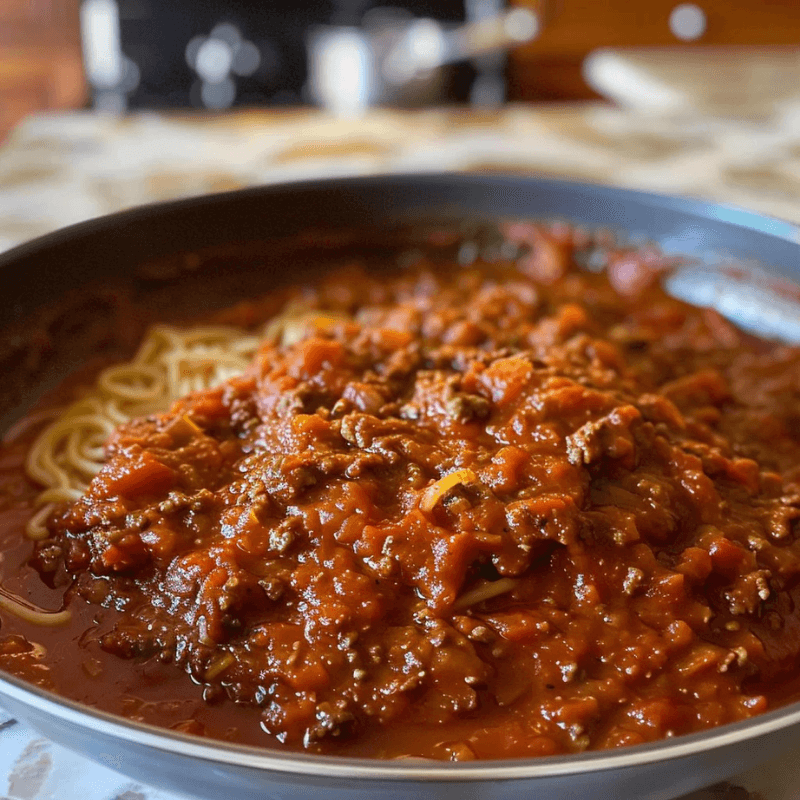This homemade spaghetti sauce recipe has been our family’s kitchen cornerstone for generations, proving that some traditions are worth preserving. While it takes just 40 minutes to prepare, the rich flavors taste like they’ve been simmering all day long.
In fact, this versatile sauce goes beyond just pasta – it’s perfect for lasagna, meatballs, and other Italian favorites. Additionally, you can choose between using quality canned tomatoes or fresh San Marzano tomatoes, making it accessible year-round. The best part? You can store it in the fridge for up to 5 days or freeze it for several months, making meal prep a breeze.
We’re excited to share our time-tested recipe that offers both vegetarian and meat options, along with the secrets that make this sauce truly special. Let’s dive into the step-by-step process of creating this family favorite that’s been perfected through generations.
The Heritage Behind Grandma’s Homemade Spaghetti Sauce
Food has power beyond mere sustenance. When I hold my grandmother’s handwritten recipe for homemade spaghetti sauce, I’m connecting with more than instructions—I’m touching a piece of my family’s history. These cherished recipes serve as tangible links to our ancestors, their cooking techniques, and the traditions they held dear.
Family recipes and their importance
Family recipes represent far more than lists of ingredients. They preserve our identity as individuals and families. Every homemade spaghetti sauce recipe tells a story—of humble beginnings, resourcefulness, and love that spans generations.
“Cooking recipes from our heritage brings a sense of togetherness that spans generations by strengthening ties with both the living and those who have passed,” notes heritage food historian Liz Williams. This connection becomes especially powerful when preparing dishes like spaghetti sauce, where the aromas and flavors instantly transport us to childhood kitchens.
Many families preserve these culinary traditions as heirlooms. When I received my Grandma Barb’s handwritten recipes after she passed, I felt both honored and responsible for maintaining this precious legacy. These recipes create bridges between past and future generations, allowing our loved ones to learn about who we are, even long after we’re gone.
How spaghetti sauce traditions evolved in America
The story of homemade spaghetti sauce in America is fundamentally a tale of adaptation. Before immigrating to the United States, Italians took immense pride in their regional recipes. However, upon arrival, they discovered themselves living alongside Italians from diverse regions—Sicilians alongside Romans—leading to the fusion of culinary cultures into what we now know as Italian-American cuisine.
Interestingly, most Italian settlers in America came from Southern Italy, which explains why restaurants primarily served dishes typical of that region: pizza and pasta with tomato sauce. Nevertheless, these immigrants faced immediate challenges with ingredients. The plum tomatoes they relied on in Italy—with thin skins ideal for quick sauce-making—were unavailable in American markets.
Consequently, Italian immigrants had to adjust their homemade spaghetti sauce recipes by increasing sugar and garlic amounts while cooking the sauce longer to properly soften American tomatoes’ thicker skins. This adaptation resulted in the thicker, chunkier spaghetti sauce that has become a classic in Italian-American cuisine.
Furthermore, the evolution of spaghetti sauce highlights something remarkable about immigrant identity. As noted by food historian Liz Williams, Sicilians, Calabrians, and Neapolitans gradually began viewing themselves simply as “Italian” in America, with their food traditions becoming increasingly homogenized.
What makes Grandma’s recipe special
What truly distinguishes a grandmother’s homemade spaghetti sauce is its ability to evoke memories. For many of us, the simmering pot represents more than dinner—it embodies our heritage. As one Italian-American notes, “I still remember the smell of my grandma making this pasta sauce in huge batches and stashing it in gallon freezer bags in the freezer”.
The best homemade spaghetti sauce recipes often contain “secret flavor enhancers” passed down through generations. Some grandmothers swear by adding a Parmesan rind for depth, while others might include a splash of red wine or specific herb combinations. These subtleties create the distinctive character that makes each family’s recipe uniquely theirs.
Perhaps most significantly, these recipes evolve while maintaining their essence. My mother learned to make homemade spaghetti sauce from her mother, adding her own slight variations while preserving the fundamental technique. This blend of tradition and personal touch ensures that while the recipe remains recognizable across generations, it also carries the signature of each cook who prepares it.
Essential Ingredients for Authentic Homemade Spaghetti Sauce
The secret to grandma’s legendary homemade spaghetti sauce lies in the careful selection of a few key ingredients. After years of perfecting her recipe, I’ve learned that quality ingredients make all the difference between an ordinary sauce and one that creates lasting memories.
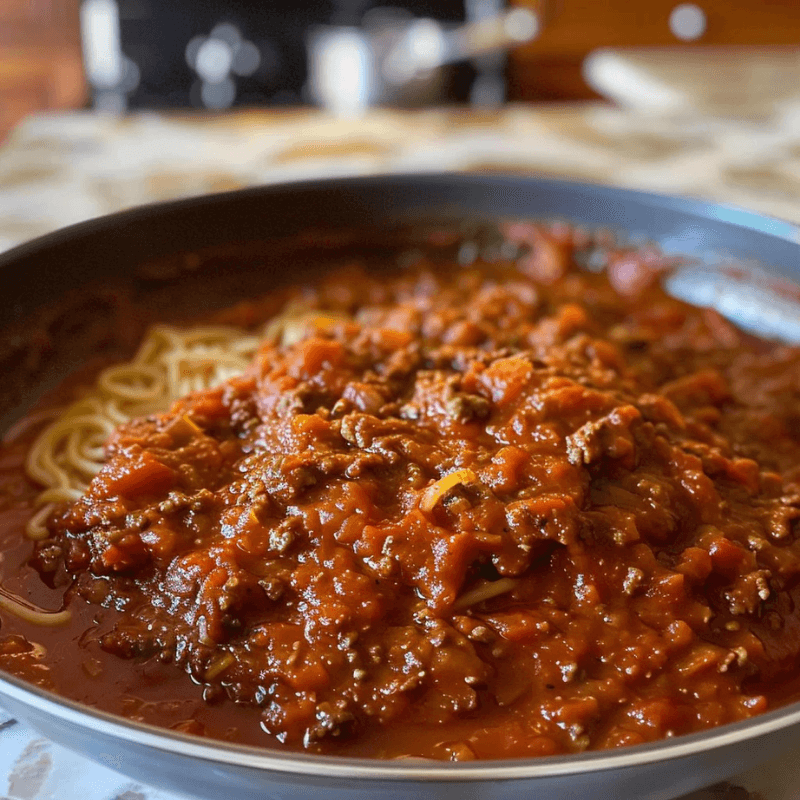
Selecting the perfect tomatoes: fresh vs. canned
Contrary to what many believe, canned tomatoes are typically superior to fresh ones for homemade spaghetti sauce. As one cooking expert puts it, “99% of the time, canned tomatoes are better than fresh” for cooking sauces. This is because canned tomatoes are preserved at the height of tomato season, ensuring consistent flavor year-round.
If using fresh tomatoes, Roma varieties work exceptionally well for homemade spaghetti sauce. They’re meaty with few seeds and cook down beautifully. However, these should only be used when truly in season—typically August and surrounding weeks.
For canned options, imported San Marzano tomatoes are the gold standard for authentic homemade spaghetti sauce. I prefer whole, peeled tomatoes rather than pre-crushed or diced varieties, as they offer better texture and flavor control. Simply crush them yourself with a spatula after they soften.
The aromatics: garlic, onions, and herbs
The aromatic foundation begins with garlic and onions, which build the flavor base for any homemade spaghetti sauce. Sauté these in olive oil until the onions become translucent, approximately 4 minutes, followed by 2 minutes for the garlic.
Beyond these basics, carrots serve a dual purpose in homemade spaghetti sauce—they add sweetness while naturally balancing acidity in tomatoes. This vegetable trick has been used by Italian grandmothers for generations.
For herbs, the quintessential Italian lineup includes:
- Dried herbs: oregano, basil, thyme, and rosemary for simmering
- Fresh herbs: basil, oregano, and parsley added just before serving to preserve their brightness
Secret flavor enhancers
Throughout my family’s history making homemade spaghetti sauce, we’ve discovered several secret ingredients that elevate a good sauce to exceptional. Primarily, a splash of red wine adds remarkable depth. Dry varieties like Chianti or Pinot Noir complement tomatoes perfectly without overpowering.
Another grandmother-approved trick involves adding a Parmesan rind during simmering. This infuses the sauce with rich umami flavor. Likewise, a small amount of sugar (preferably brown or raw) perfectly balances tomato acidity.
Some less conventional but effective enhancers include a pinch of instant coffee for depth, a touch of nutmeg for earthiness, or even a bit of baking soda to balance acidity.
Quality matters: choosing the best olive oil
Extra virgin olive oil (EVOO) forms the foundation of any authentic homemade spaghetti sauce. Look specifically for oils in dark glass or metal containers, as these protect against light damage.
When selecting olive oil, single-origin varieties generally offer better quality than mixed-country blends. Additionally, look for harvest dates to ensure freshness—ideally within one to two years.
Storage matters equally—keep your olive oil away from heat and light, particularly away from the stove where temperature fluctuations accelerate deterioration. Following these guidelines ensures your homemade spaghetti sauce benefits from olive oil’s full flavor potential.
Step-by-Step Process to Make Spaghetti Sauce From Scratch
Creating homemade spaghetti sauce from scratch takes patience and skill, but the results far outweigh any store-bought alternative. Let me walk you through my grandmother’s time-tested techniques that have been perfected through decades of Sunday family dinners.
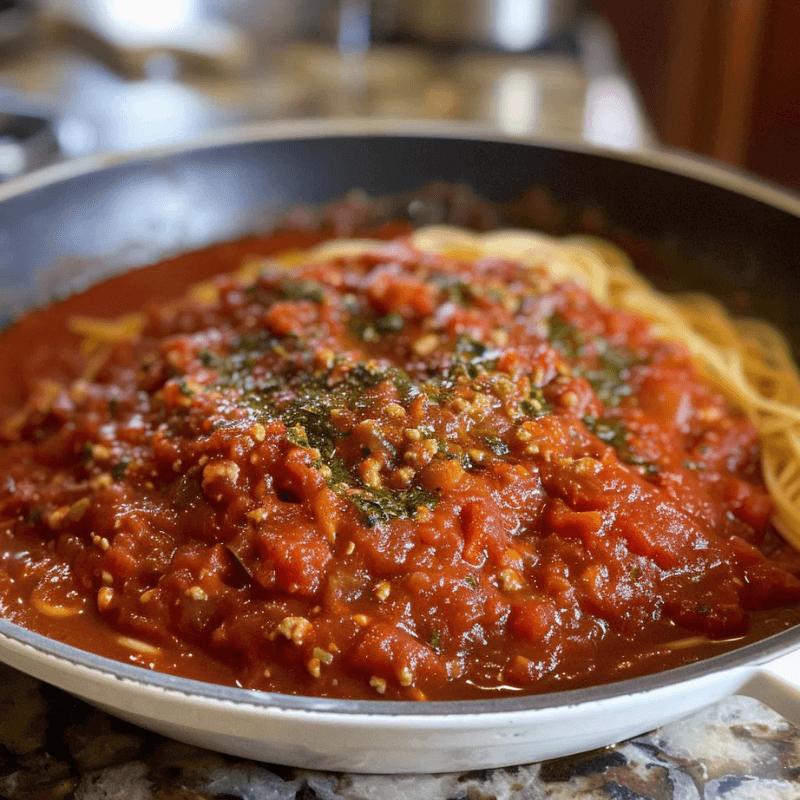
Preparing fresh tomatoes (blanching and peeling)
Starting with fresh tomatoes requires a simple yet crucial blanching process. Begin by washing firm, ripe tomatoes and using a sharp knife to score an “X” on the bottom of each one. Next, bring a large pot of water to a rolling boil, then carefully lower your tomatoes into the water—no more than a dozen at once to maintain control.
Allow them to blanch for 30-60 seconds, just until you notice the skin beginning to loosen around the X mark. Immediately transfer them to an ice water bath using a slotted spoon. As they cool, you’ll see the skins starting to pull away naturally from the flesh. Once cool enough to handle, the peels should slide off effortlessly. Finally, cut out the cores, and your tomatoes are sauce-ready.
Building the flavor base
The foundation of exceptional homemade spaghetti sauce begins with aromatics. In a pot or braiser, heat extra virgin olive oil over medium heat until it shimmers. Add finely chopped onions, minced garlic, and grated carrots—these vegetables not only add flavor but also help thicken the sauce naturally.
Cook this mixture for about 5 minutes until softened but not browned. Moreover, this step allows the oil to capture and amplify the aromatics’ essential flavors. Subsequently, add your prepared tomatoes (or quality canned crushed tomatoes for convenience), along with about half a cup of water or stock. Season with kosher salt, black pepper, dried oregano, and paprika, then stir in fresh herbs like basil and parsley.
The proper simmering technique
Contrary to popular belief, the perfect simmer isn’t about high heat but consistency. Initially, bring your sauce to a brief boil, then immediately reduce to low heat—you’re looking for tiny, steady bubbles breaking the surface with occasional wisps of steam. This temperature range should be between 185-205°F.
Leave the lid off to allow gradual evaporation, which concentrates flavors and thickens the sauce. Stir occasionally throughout the simmering process, watching the consistency. If the sauce becomes too thick, add small amounts of water or pasta cooking water (which contains starch that helps bind the sauce).
How to know when your sauce is done
Your homemade spaghetti sauce will need at least 15-20 minutes of simmering, although many traditionalists prefer 1-3 hours for deeper flavor development. The sauce is ready when it has noticeably thickened and mounds on a spoon without being watery.
A helpful test involves placing a small amount on a chilled plate—if it stays in a mound without liquid seeping out, it’s done. Although the timing varies by recipe, the most important indicator is taste. The sauce should no longer have that raw tomato flavor yet still maintain its rich tomato essence. At this point, you might consider adding a tablespoon of balsamic vinegar off-heat to balance flavors before serving.
Variations of Traditional Homemade Spaghetti Sauce
One fascinating aspect of homemade spaghetti sauce lies in its versatility. Throughout my culinary journey, I’ve discovered that understanding these variations allows you to tailor the perfect sauce for any occasion.
Classic meatless sauce (marinara)
First and foremost, marinara serves as the foundation for countless Italian dishes. Unlike complex spaghetti sauces, authentic marinara embodies simplicity with just a few quality ingredients: tomatoes, garlic, olive oil, and herbs. Originating in Naples, this sauce earned its name from Italian sailors (marinara literally means “sailor-style”) since its ingredients didn’t spoil easily and could be prepared quickly.
The key difference between marinara and meat-based spaghetti sauce is preparation time – marinara cooks relatively quickly, preserving the bright tomato flavor, whereas meat sauces develop deeper richness through longer cooking.
Meat options: beef, pork, and sausage combinations
In contrast to marinara’s simplicity, meat-based sauces offer complex flavor dimensions. Many Italian families swear by combining ground beef and Italian sausage for optimal taste. The sausage (whether sweet, mild, or hot) introduces essential seasonings while ground beef provides hearty texture.
For traditional homemade meat sauce, you can either:
- Use equal parts ground beef and Italian sausage
- Add sausage pieces as meatball-sized chunks
- Use just ground beef with increased seasonings for milder flavor
Interestingly, some cooks prefer browning meats separately before adding to the sauce, while others simmer raw meat directly in the sauce until fully cooked.
Regional Italian variations worth trying
Italy’s diverse regions offer distinctive sauce variations worth exploring. Ragù alla Bolognese, created by Alberto Alvisi (Pope Pius XII’s chef) in the late 18th century, combines beef or pork with pancetta, carrots, wine, and a splash of milk or cream.
Sicily’s Agrodolce sauce presents an intriguing sweet-sour profile influenced by Arab cuisine during their 9th-century conquest of Sicily. Its primary ingredients include balsamic vinegar, wine, and sugar in carefully balanced proportions.
For Sicilian authenticity, try pasta alla carrettiera, featuring canned tomatoes, dried porcini mushrooms, tuna, and fresh herbs for a surprisingly light yet flavorful combination.
Storing and Preserving Your Best Homemade Spaghetti Sauce
After perfecting your homemade spaghetti sauce, proper storage becomes essential for maintaining its flavor and ensuring food safety. Your efforts in selecting quality ingredients and perfecting the cooking process deserve careful preservation techniques.
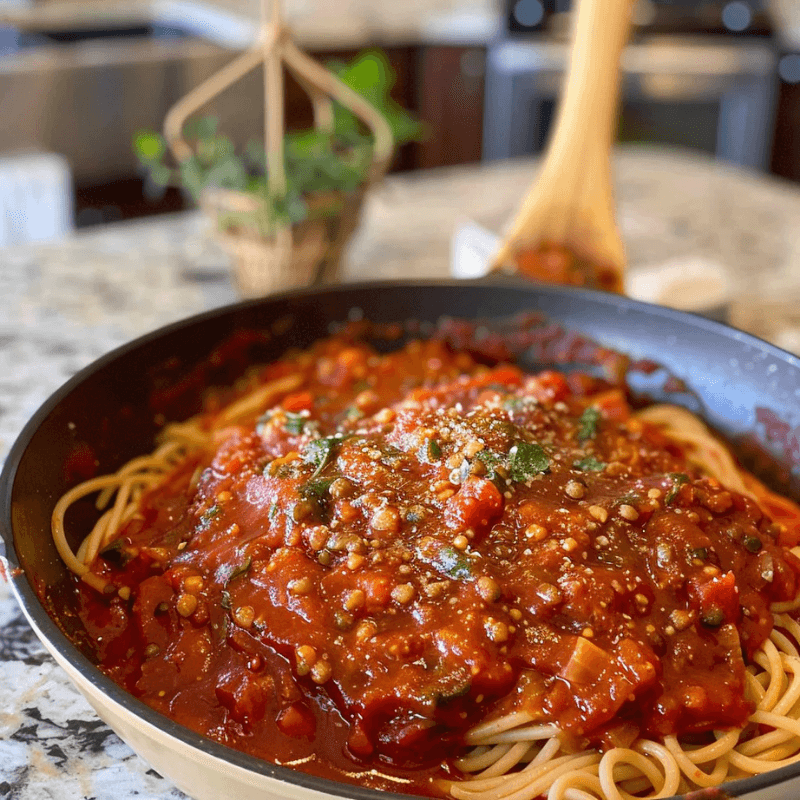
Refrigeration guidelines
Homemade spaghetti sauce should be refrigerated promptly after cooling. For maximum freshness, store your sauce in airtight containers within two hours of cooking to prevent bacteria growth. Homemade tomato sauce typically lasts 3-5 days in the refrigerator, while store-bought varieties can remain safe for up to 7 days after opening.
Always check for spoilage before using refrigerated sauce. Discard any sauce with an unusual smell, particularly sour odors, as this indicates spoilage. Even sauce that doesn’t show obvious signs of spoilage should be reheated to 145°F before serving to kill potential bacteria.
Freezing methods for long-term storage
Freezing extends your homemade spaghetti sauce’s shelf life to approximately 3 months. For best results:
- Cool the sauce completely before freezing
- Divide into meal-sized portions to avoid wasting defrosted sauce
- Leave extra headspace in containers as sauce will expand when frozen
Container options include glass jars, plastic containers, or freezer bags. Freezer bags are particularly effective as they allow you to squeeze out excess air and store flat, optimizing freezer space. Remember to label containers with the date to track freshness.
Traditional canning techniques
Canning provides long-term preservation without refrigeration. Properly sealed jars of homemade spaghetti sauce can last up to one year. For safe canning:
First, add 2 tablespoons of lemon juice per quart jar to ensure proper acidity levels. This step is crucial as tomatoes alone may not provide sufficient acidity to prevent botulism.
For water bath canning, process jars for 40 minutes at sea level, adding 5 minutes for each 1,000 feet of altitude. Alternatively, pressure canning requires 20 minutes for pint jars or 25 minutes for quart jars.
Be cautious about ingredients—adding meat requires pressure canning, and fresh vegetables might alter acidity levels, potentially making traditional water bath canning unsafe.
How to revive leftover sauce
Thaw frozen sauce in your refrigerator overnight for best results. For quicker thawing, place the container in cold water. When reheating:
Heat sauce gradually on low-medium heat, stirring frequently to prevent sticking. Adding a small amount of water, broth, or olive oil creates steam that helps prevent sticking while reheating.
To enhance leftover sauce, add fresh herbs just before serving or a splash of balsamic vinegar to brighten flavors. For sauce that’s thickened too much during storage, a small amount of pasta cooking water helps restore the ideal consistency while adding starch that helps the sauce adhere to pasta.
Conclusion
Making homemade spaghetti sauce certainly requires time and attention, though the rewards make every minute worthwhile. This cherished recipe stands as proof that traditional cooking methods still hold immense value in our modern kitchens.
Family recipes like this one offer more than just delicious meals – they create lasting connections between generations. Whether you choose fresh tomatoes or quality canned ones, add meat or keep it vegetarian, this versatile sauce adapts to your preferences while maintaining its authentic character.
My grandmother’s recipe has served our family well for decades, and now it can become part of your culinary tradition too. Remember that perfecting your sauce takes practice, but each batch brings you closer to mastery. Store your sauce properly, experiment with variations, and most importantly, share it with those you love. After all, the best family recipes are those passed down with care, creating memories that last far beyond the dinner table.

Welcome to HealthyBlog365, your go-to destination for all things food and drink. We believe that every meal is not just a way to nourish your body but also a meaningful connection with yourself and your loved ones.
HealthyBlog365 was created with a mission to inspire healthy living through nutritious meals and refreshing beverages. Here, you’ll discover a treasure trove of creative recipes, kitchen tips, and healthy eating trends tailored to fit modern lifestyles.
 What can you find on HealthyBlog365?
What can you find on HealthyBlog365?
- Delicious and easy-to-make recipes: From simple meals for busy mornings to wholesome dinners for family gatherings, we’ve got you covered for every occasion.
- Nutritious drinks: Explore recipes for juices, smoothies, detox teas, and drinks that cleanse your body, boost your mood, and energize your day.
- Guides on eating habits: Get detailed insights into popular diets like keto, low-carb, and vegetarian-friendly meal plans.
- Kitchen hacks: Discover smart tips to save time, preserve food, and cook more efficiently.
We are committed to providing high-quality content, staying up-to-date with the latest trends, and maintaining a balance between nutrition and flavor.
 Connect with HealthyBlog365 on Social Media
Connect with HealthyBlog365 on Social Media
Join the HealthyBlog365 community on social media platforms to stay updated with our latest posts, watch exciting tutorials, and share your food stories with us:
Facebook: Follow us here to stay updated with our latest posts and join our community.
Instagram: Check us out here for inspiring visuals and ideas.
Pinterest: Pin with us here to save creative ideas you’ll love.
YouTube: Subscribe here for detailed tutorials and exciting videos.
 Thank You for Supporting HealthyBlog365!
Thank You for Supporting HealthyBlog365!
We aim to build a connected community where everyone can share and learn from each other. If you have any questions or suggestions, don’t hesitate to reach out to us via social media or our website.
We hope you have a wonderful time on HealthyBlog365 and find new inspiration for your healthy culinary journey!
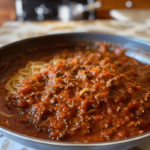
Homemade Spaghetti Sauce
Description
Ingredients
- 2 lbs fresh ripe Roma tomatoes
- 2 tbsp extra virgin olive oil
- 1 medium onion finely chopped
- 4 garlic cloves minced
- 1 tsp dried oregano
- 1 tsp sugar
- Salt and pepper to taste
- 1 cup fresh basil leaves chopped
Instructions
- Wash and chop the tomatoes. Blanch them in boiling water for easier peeling if desired.
- In a large pot, heat olive oil over medium heat. Add onion and sauté until translucent (about 5 minutes). Then add minced garlic and sauté until fragrant (about 1 minute).
- Stir in the chopped tomatoes, sugar, oregano, salt, and pepper. Mix well.
- Bring the mixture to a gentle boil, then reduce heat to low. Cover partially and simmer for 30-40 minutes, stirring occasionally.
- Just before serving, stir in the fresh basil and adjust seasoning as necessary.

